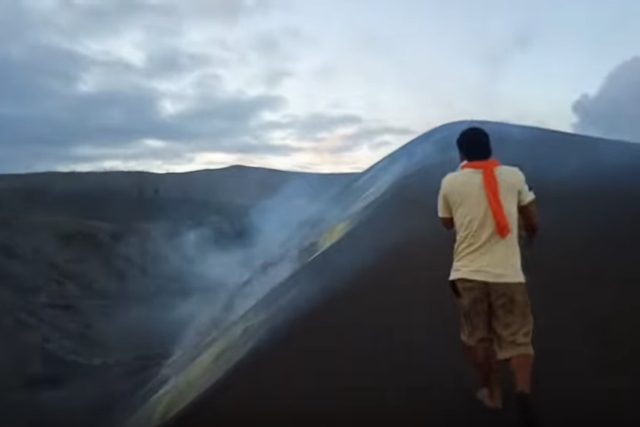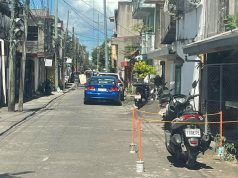
A video of an unidentified man attempting to get dangerously close to the active Taal Volcano despite the complete island being declared a “no man’s land” in the past two weeks went viral on social media.
The man, who is ordinarily dressed with only a pair of slippers and a towel to protect him, appeared to be a local as he mentioned he has been in the same area prior to the volcano’s eruption.
His intentions are unclear but he pointed out how the area has drastically changed following January 12’s steam-driven eruption.
At some point in the video, while the man walked in an attempt to get a closer look at one of the fissures emitting smoke, his companion groaned—presumably from the high amount of sulfur dioxide and other volcanic gases in the area.
The alarming video has since reached Facebook and even the Philippine Institute of Volcanology and Seismology.
According to reports, the unidentified man was not on the main crater but on the mountain trail known as “Daang Kastila,” a tourist trail leading to the main crater ridge view deck of Taal.
It is unknown how he and his companion got there since the whole volcanic island is declared off-limits since January 14, two days after it initially erupted.
Mariton Bornas, Phivolcs’ Volcano Monitoring and Eruption Prediction Division head, warned that any one of the eruption pits shown in the video could erupt “anytime.”
RELATED: Residents given 48 hours to leave Taal danger zone
“The large fissure that he saw, there’s an explosion pit there and there can be an eruption anytime,” she said to ABS-CBN News.
“There are also high levels of sulfur near it. It is very dangerous if we inhale (sulfur dioxide) in high concentrations. That’s toxic gas,” Bornas added.
“There is also a possibility of carbon dioxide being emitted. Carbon dioxide does not have any smell or color and it can cause asphyxiation,” she said.
Bornas didn’t mention whether the man and his companion in the video would face sanctions for visiting an off-limits zone.
The volcanic island of Taal and its seven-kilometer radius is currently declared a danger zone by PHIVOLCS since the volcano is still under Alert Level 3 where there is a “decreased tendency towards hazardous eruption.”
Taal Volcano is one of the country’s most active volcanoes that has seen several eruptions which have claimed lives and completely changed the landscape of the area.
Some of a volcano’s health hazards
A volcano can emit lots of gases considered dangerous to a human’s health such as sulfur dioxide, carbon dioxide, hydrogen chloride, hydrogen fluoride and hydrogen sulfide.
According to an article from the United States’ National Center for Biotechnology Information, heavy metals can also be emitted into the air like lead and mercury.
People who inhale or are exposed to such chemicals and gases can die from asphyxiation, the article noted.
The American Geosciences Institute revealed that “sulfur dioxide can irritate the skin, eyes, and respiratory system.” Carbon dioxide, which is denser than air, can also be “lethal” in huge amounts “if breathable air is displaced.”
Ash emitted from a volcano can also cause health complications involving the respiratory system, as well as the eyes, nose, throat and even the skin, following an exposure.









